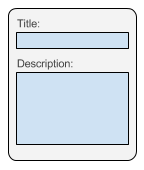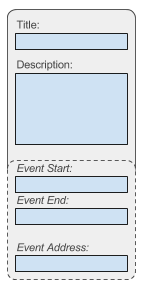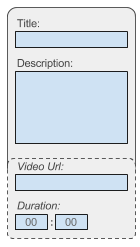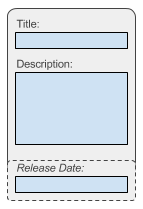What are Post Types and Taxonomies?
If you’ve ever worked with a content management system (CMS), you probably know what post types and taxonomies are. You might even recall conversations on post types and taxonomies that involved the following buzzwords:
- post types
- custom post types
- post taxonomies and custom taxonomies
- post type taxonomies and custom post type taxonomies
There are so many different terms, it can be hard to differentiate one from another. But that’s why we’re here!
What is a Post Type?
Most every kind of content published or released on the internet will have both a title and a description/content.
Example of a Basic “Post Type”
This is the starting point for most post types, mainly used for blog posts or page posts. However, not all kinds of content have the same needs. Organizing and differentiating post types help prevent them from being lumped together.
For example, “Events” need a begin- and end–time. But “Video” content will likely need a duration. Below are some example of different kinds of post types. They have a title and description just like basic post type, but notice how each have been customized by extending them with certain fields to satisfy niche requirements of that particular kind of content. This is what is called a custom post type.
Events
Videos
Books
What is a Taxonomy?
The definition Google gives when searching “define: Taxonomy”:
a scheme of classification
The keyword here is classification. A taxonomy is a structure used to classify a post. An example of a commonly used Taxonomy would be “Category.” Categories are nice, but to classify and organize everything this way tends to lead to bland, one-dimensional site organization. Created taxonomies (or custom taxonomies) are only applied to post types that are relevant.
Example Taxonomies for an Video Post Type:
Source: [ ] Vimeo [ ] Youtube [ ] Vevo [ ] Google Video Rating: * G * PG * PG-13 * R
Example Taxonomies for an Book Post Type:
Covering: * Paperback * Hardback Retailers: [ ] Barnes & Noble [ ] Amazon [ ] iTunes [ ] Best Buy
As you can see from the examples above, taxonomies are related to their specific post types. A “Video” post type will not have the same taxonomies as a “Book” post type, and vice versa.
Categorizing all your content by custom post types is a really user-friendly way of letting your users sort out information. Not sure where to start? WDG’s WordPress developers can work with you every step of the way. Get a project started by getting in touch today.



